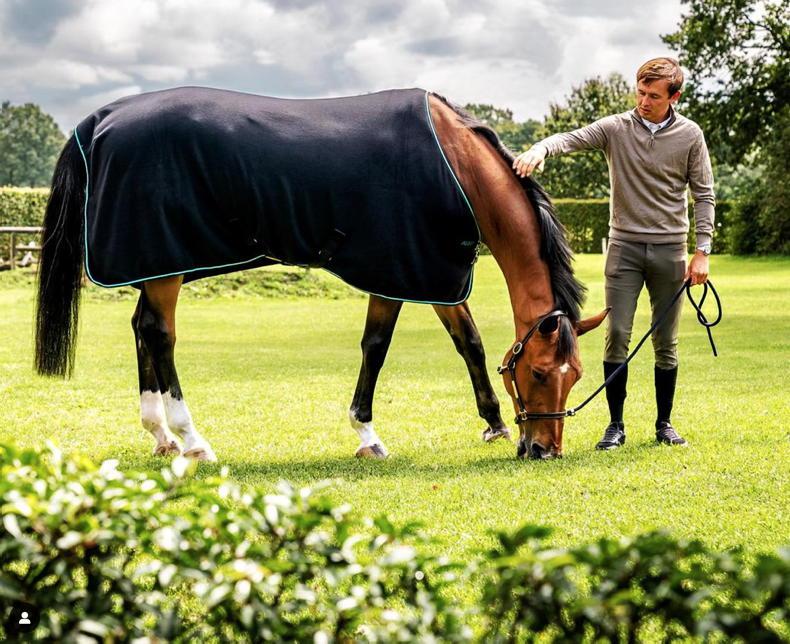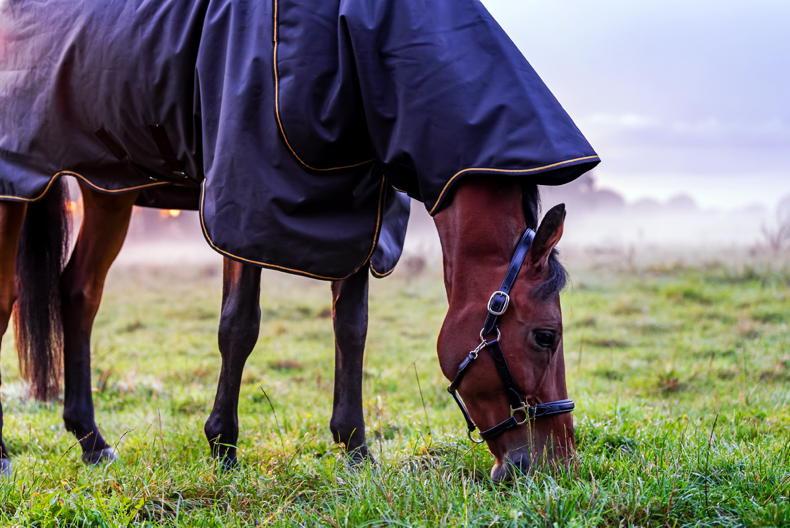ALOGA Equestrian celebrates its first birthday this week; to celebrate, they are sharing some top tips for rugging this autumn. Aloga was created based on the lived experience of the Allen family’s life breeding and producing horses. Blanketing is an essential part of how the Allen family care for the diverse range of horses they own and produce. Whether it is their broodmares and youngstock in Wexford or their top level competition stars in Germany, they found there was a need for high functioning, easy to use blankets that would stand up to the wear and weather at home and abroad. Aloga Equestrian have created a considered range of high performing blankets that will protect your horse, whether you are a breeder, owner or competitive amateur.
Aloga have put together some key considerations when it comes to blanketing to ensure your horse stays comfortable and protected.
Why blanket?
Blanketing, especially during autumn and winter months, offers a range of benefits to both horse and owner. Horses that are blanketed during turn out are protected from the elements – especially rain – when using a waterproof turnout. This can help them maintain a consistent core temperature, protect their skin from issues, such as rain scald and, from an owners’ perspective, helps cut down grooming time, as their coats are protected from mud and dirt.
If you plan on clipping this winter, adding a blanket with weight provides insulation in place of what coat hair has been removed. Blanketing also helps prolong the length of time the clip will last. For horses that are kept in during the winter months, blanketing protects core muscle groups from draughts and keeps coats free from stable stains.
For older or underweight horses, blanketing can help regulate body heat. As horses age, their metabolism can start to slow down and reduce their ability to generate and maintain body heat as effectively as before. Similarly, with horses that might be underweight, body fat acts as a natural insulation. Horses lacking condition may lose heat quicker, meaning they will require more weight/fill when blanketing.
How the rug fits:
Even if you have owned your horse for many years, we always recommend re-measuring them before blanketing up for the winter to ensure the correct fit. Changes to exercise and feeding routines or growth spurts can impact the size blanket your horse will take. We recommend using a soft measuring tape or piece of string to measure from the centre of the horse’s chest to the centre of their tail. From this measurement remove 10cm/4inches to get your horse’s correct size. A step by step guide of how to measure your horse correctly can be found on Aloga-Equestrian.com.
The right fabric for rugs:
Polyesters and nylons offer the best fabric durability in turnout blankets. When considering what a blanket is made from, pay attention to the denier of the fabric mentioned. Denier (D) is a unit of measurement that indicates the thickness of individual threads used to make up a fabric. In the case of blankets made from artificial fabrics, the higher the denier the thicker and more durable the fabric tends to be. For example, the Aloga Turnout blanket is made from a 600D ripstop polyester, while the Aloga Pro Turnout is made from a 1200D polyester, meaning it is a tougher more robust fabric, ideal for horses living out in groups or in environments that might be exposed to extreme conditions.
Function:
Horses, like humans, sweat through their skin, meaning it is imperative to select a turnout blanket that is both waterproof and breathable. While waterproofness ensures a turnout protects your horse from rain, breathability allows for excess body heat to escape through the fabric and prevent them from overheating. All Aloga turnout blankets are made from quality controlled fabrics that are engineered to endure any weather, offering 3000mm breathability and 3000mm of waterproofness.
The fill of the rug:
Fill or weight refers to the amount of fibre insulation in a blanket. Lightweight blankets, which range from 0g (no fill) to 150g, are ideal for horses that are unclipped in cooler temperatures from 4°C to 10°C. Clipped horses or as temperatures drop (below 4°C) opting for blankets that are medium (150g-200g) or heavy weight (300g upwards) will help keep your horses well-insulated.
Be mindful of over-blanketing, a practice of using blankets that are too heavy, as this can cause your horse to overheat. Sweating, damp patches under blankets and restlessness can be indications that your horse is too hot. Opting for Aloga liners, a separate layer that can be secured inside turnouts with liner loops, offers flexibility to change the fill of your blanket without having to have multiple different blankets. As the winter weather creeps in, it is important to remember that you, as the horse’s owner, are best placed to understand and assess their individual needs when it comes to blanketing. Stay up to date with aloga-equestrian.com for for more tips and advice on blanketing your horses.




 This is a subscriber-only article
This is a subscriber-only article
 It looks like you're browsing in private mode
It looks like you're browsing in private mode






SHARING OPTIONS: